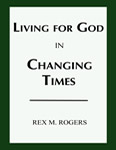American public schools continue to struggle with student dress codes: to have them or not to have them? To enforce them? How to enforce them? What should be allowed and what should be disallowed?
The problem is not so much modesty, lack of some perceived decorum, or distraction from the academic purposes of the school experience—though these concerns are real—as it is safety. “Hoodies” and cargo pants are being outlawed because they provide layers or pockets in which students can hide weapons or other contraband. In addition, schools are banning violent graphics and t-shirt messages, racist slogans, or other unnecessarily provocative material. Too tight, too loose, too many questionable insignias, too much skin, too much, too little, the beat goes on. But it’s a long way from the sixties and seventies. Of course, some of these actions prompted First Amendment challenges.
At Cornerstone University we discarded a lengthy, list-based dress code years ago. But we still want to influence students to select dress that represents them well as Christian people. So we developed a “Statement on Modesty,” which is available on the university website.
Basically, when it comes to dress we’ve told students they should apply two biblical principles: modesty and appropriateness. Our dress, regardless of our age or gender, should always be modest no matter in what culture we find ourselves. And our dress should be appropriate, which is to say it should fit the occasion or the event at which we are present.
I own a swimming suit that I believe is modest. I wear it on the beach, and I’ve worn it when I have been with student groups. I do not wear it to the local country club, fine restaurants, campus, or church on Sunday morning. The point is something can be modest but not appropriate. Both principles are important.
I’m not saying this university never experiences problems with student dress, nor am I saying that students never make poor choices or push the envelope. Sometimes we have problems because students make poor dress choices. But we’re here to help them learn and grow. We interact with them and talk about our principles, and most of them respond in due course.
This principled approach to student, or personnel, dress has spared the university a world of headaches. It is not specific, so at times it must be interpreted. But it’s rooted in our Christian worldview, and it makes sense to students. It gives them guidance for a lifetime, not just rules for the moment. These principles weather and survive changes in fads and fashions. Modesty and appropriateness principles may not speak directly to weapons and contraband hidden in clothing, but the Christian faith speaks to such matters in other ways.
Dress codes are problematic for administrators at any level and in any type of institution. I wish my colleagues well, and I’m thankful this university has found a very workable and effective way of addressing the issue.
© Rex M. Rogers - All Rights Reserved, 2006
*This blog may be reproduced in whole or in part with a full attribution statement. Contact Dr. Rogers or read more commentary on current issues and events at www.rexmrogers.com or follow him at www.twitter.com/rexmrogers.


